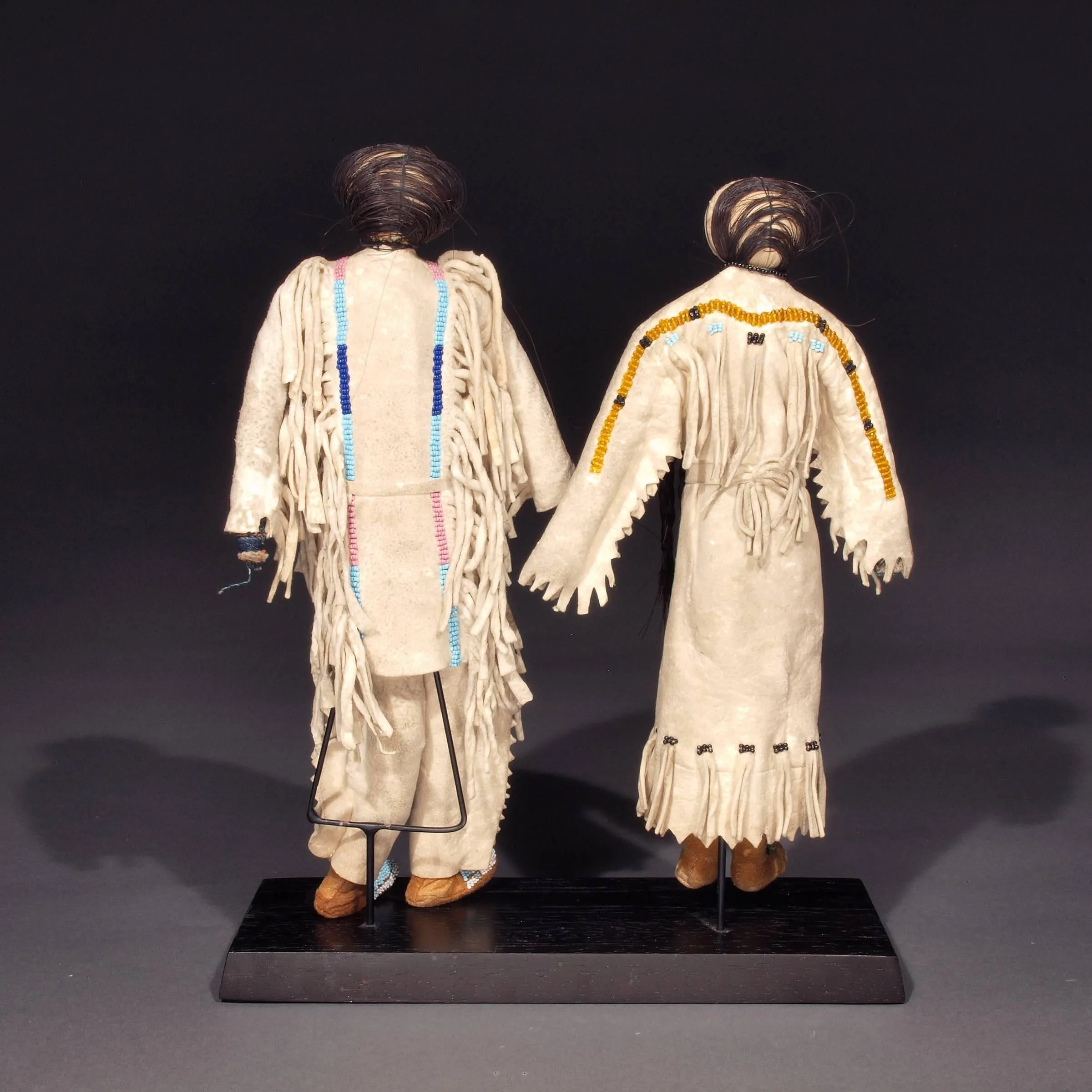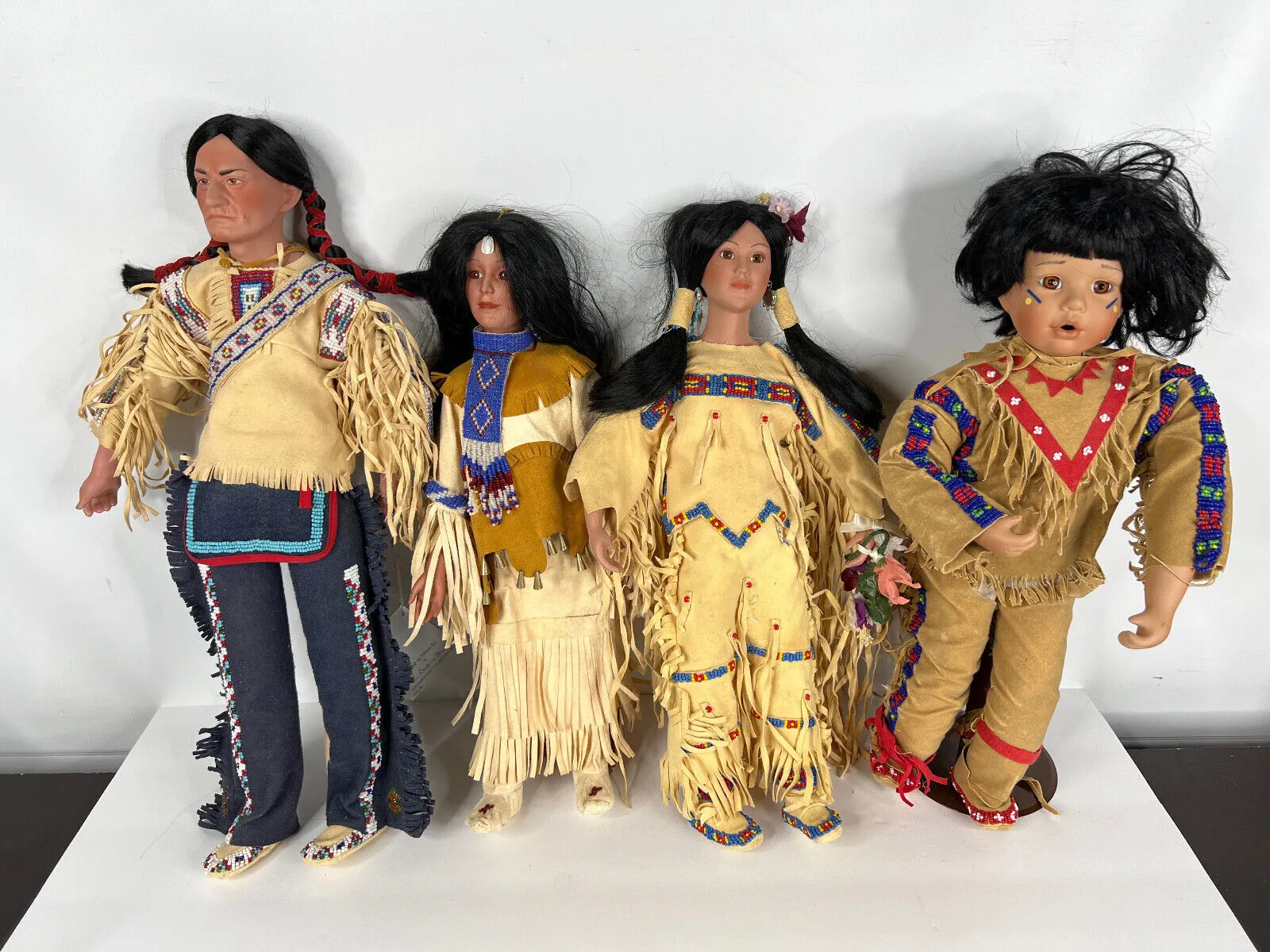In the rich tapestry of Native American cultures, few ceremonies are as sacred and culturally significant as weddings. These unions are steeped in tradition, with every element carrying deep symbolic meaning. Among the Cherokee Nation, weddings are a time-honored celebration of love and commitment, and at the heart of this celebration is the attire.
The traditional Cherokee wedding dresses, adorned with intricate designs and vibrant colors, hold a special place in the hearts of those who value their heritage. In this exploration of “Traditional Cherokee Native American Wedding Dresses,” Native American Clothes embark on a journey into the captivating world of Cherokee weddings, where attire becomes a living testament to love, culture, and history.
What was the traditional marriage in the Cherokee?
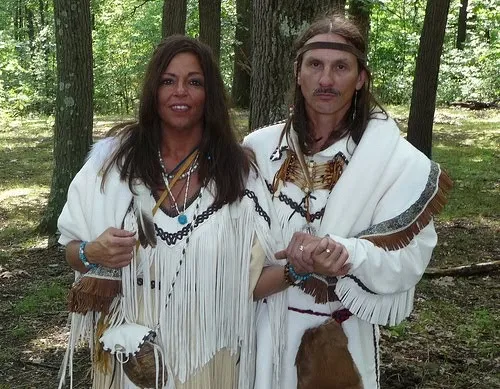
Marriage is a sacred institution that has been a cornerstone of human society across cultures and centuries. Among the Cherokee people, marriage held a special place in their traditions, with intricate rules and customs governing the union between individuals. In this exploration, we delve into the fascinating journey of Cherokee marriage, from its traditional roots to the transformations witnessed in modern times.
Traditional Cherokee Marriage: Rules and Rituals
Matrilineage Restrictions
In the traditional Cherokee marriage system, a complex web of rules dictated who could and couldn’t be marriage partners. One of the most distinctive aspects was the prohibition of members from both the mother’s and father’s matrilineage as potential spouses. This practice aimed to maintain social harmony and avoid conflicts within the community.
Preference for Patrilineage
Conversely, Cherokee customs favored marriages within the father’s Father’s and mother’s father’s matrilineage. These unions were not only permitted but often encouraged. Such marriages were seen as a way to strengthen family ties and preserve cultural continuity.
Monogamy and Polygyny
While monogamy was the prevailing norm in Cherokee marriages, polygyny, where a man could have multiple wives, was also allowed and occasionally practiced. This flexibility reflected the adaptability of Cherokee customs to different family dynamics.
The Eighteenth Century: An Informal Affair
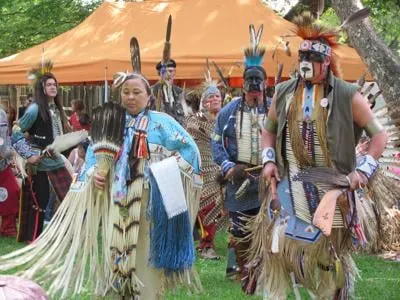
During the eighteenth century, Cherokee marriage ceremonies were relatively informal affairs. A man seeking marriage would first obtain the consent of the prospective bride and her mother. Once granted, he would accompany the bride to a previously prepared dwelling place, marking the beginning of their life together.
Matrilocal Residence: The Traditional Norm
A significant aspect of Cherokee marriage was the practice of matrilocal residence. This meant that the newlywed couple typically resided with or near the bride’s family. This arrangement was deeply rooted in Cherokee culture and had practical implications for maintaining close-knit communities.
Divorce: A Common Practice
In traditional Cherokee society, divorce was not stigmatized but rather considered a practical solution to marital issues. It could be initiated by either party, and the process was relatively straightforward. This flexibility allowed couples to part ways amicably when needed, reducing the potential for long-term conflicts.
Modern Cherokee Marriages: A Blend of Tradition and Change
While the traditional Cherokee marriage customs provided a strong foundation for their society, many aspects have evolved over time. In the modern era, Cherokee marriages have adapted to contemporary norms and values.
Matrilineage Restrictions Erode
One of the most noticeable changes is the erosion of strict matrilineage restrictions in choosing marriage partners. Today, Cherokee individuals often have greater freedom in selecting their spouses, irrespective of matrilineal affiliations.
Shift in Residence Patterns
Matrilocal residence, once the norm, has gradually given way to more diverse living arrangements. Cherokee couples now have the flexibility to choose where they reside, reflecting changing societal dynamics.
Continued Preference for Monogamy
While polygyny was practiced in the past, monogamy has become the predominant form of marriage among modern Eastern Cherokee. This shift aligns with broader cultural shifts and legal frameworks.
Divorce in Modern Cherokee Marriages
Divorce remains a feasible option in modern Cherokee marriages, mirroring the flexibility of traditional practices. Couples can seek divorce with relative ease when faced with irreconcilable differences.
How did the Cherokee tribe dress?
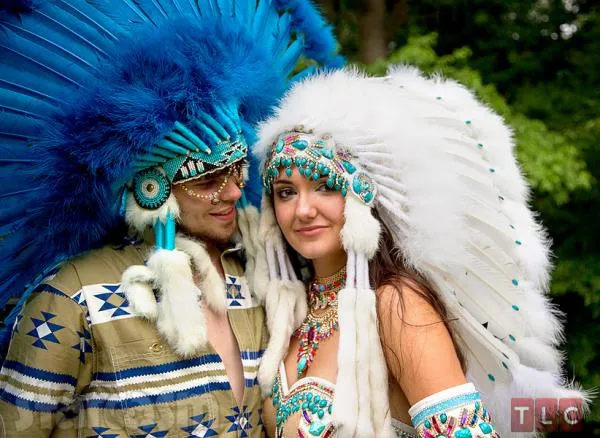
In the early 19th century, the Cherokee people found themselves in a state of transformation. Their traditional way of life was slowly integrating American and European influences, impacting everything from land ownership and farming practices to gender roles. As these winds of change swept through the Cherokee nation, their material culture underwent a remarkable evolution.
Andrew Jackson’s Unique Request
One intriguing historical anecdote involves General Andrew Jackson and the Creek War. Jackson, a prominent figure in American history, made a rather unusual request of the Cherokee warriors during this conflict. He asked them to don either white plumes or deer tails in their hair. The rationale behind this seemingly peculiar request was simple yet ingenious – it was meant to help distinguish friend from foe on the battlefield.
Cherokee Attire: A Blend of Two Worlds
During the Creek War, Cherokee participants, who were not provided with standardized weaponry or uniforms, brought with them a diverse array of clothing and gear. Their attire represented a unique blend of traditional Cherokee garments and elements of American fashion.
Cherokee warriors sporting linen shirts, deerskin moccasins, and leggings. What’s more, it was quite common to see them adorned with beaded or decorative sashes, scarves, belts, and garters. The Cherokee had an eye for ornamentation, with silver gorgets, armbands, and earrings adding to their distinctive style.
Interestingly, there was no one-size-fits-all approach among Cherokee men. While some continued to shave their heads and proudly displayed facial and body tattoos or paint, others chose a more vibrant route – colorful turbans adorned with feathers and other striking embellishments.
Weapons of Choice
The Cherokee warriors were not only diverse in their fashion choices but also in their weaponry. While some brought firearms like flintlock pistols, muskets, or rifles, many relied on traditional weapons. The bow, traditionally crafted from Black Locust wood, paired with arrows fletched with turkey feathers, served them well in long-range combat.
Ferocious Hand-to-Hand Combat
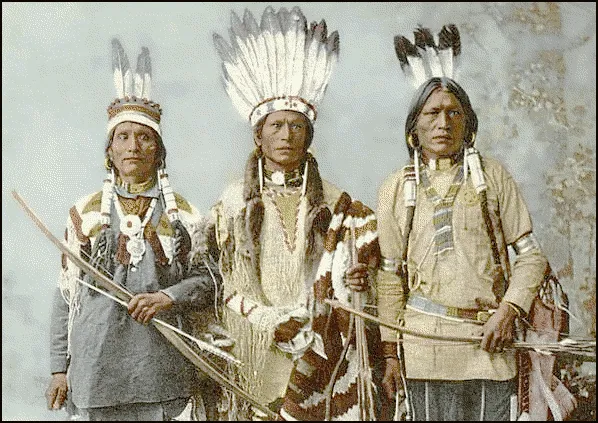
Reports from the Creek War tell tales of ferocious hand-to-hand combat, where the Cherokee warriors displayed remarkable prowess. In close-quarter battles, they wielded an array of formidable weapons. Among them was the long knife, which would later gain fame as the “Bowie Knife” after some modifications by Jim Bowie. These long knives featured blades ranging from 7 to 12 inches, with straight backs and a single-sharpened side. Often, the handles were adorned with intricate decorations and carvings.
Another distinctive weapon was the elaborately carved war club, typically carved from a single piece of wood. These war clubs varied in length but were often around 24 inches long. Similar to other tribes from the Southeast, the Cherokee’s war clubs featured a heavy ball head, occasionally fitted with a spike made of bone, stone, or metal.
Last but not least, the tomahawk, a versatile hand axe with a straight shaft and a single, usually triangular, axe head. Some tomahawks featured a spike or hammer poll opposite the head. These tomahawks were highly favored by the Cherokee warriors, serving not only as invaluable tools but also as versatile weapons. They could be accurately thrown or wielded with ease in close combat situations.
In summary, the early 19th century was a period of significant change for the Cherokee people, both in terms of their evolving traditions and their adaptation to new tools and styles of warfare. This chapter in Cherokee history highlights their ability to blend the old with the new, creating a rich tapestry of culture and combat that continues to be a source of fascination and admiration today.
What is the Cherokee wedding prayer?
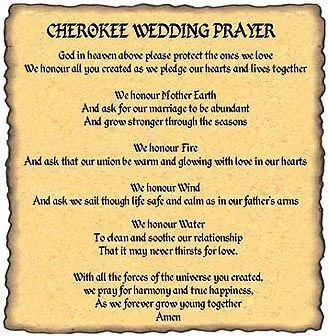
Have you ever wondered about the profound words of the Cherokee wedding prayer? It’s a heartfelt invocation that beautifully encapsulates the essence of love, nature, and unity.
“God in heaven above, please protect the ones we love.”
In these opening words, we reach out to the divine, seeking protection for those dear to our hearts. It’s a universal plea for safeguarding the love that binds us.
“We honor all you created as we pledge our hearts and lives together.”
This line is a solemn acknowledgment of the interconnectedness of all creation. As two souls come together in matrimony, they recognize their role in the grand tapestry of life.
“We honor Mother Earth and ask for our marriage to be abundant and grow stronger through the seasons.”
Here, Mother Earth takes center stage. The couple seeks her blessings for a marriage that flourishes and thrives, much like the changing seasons.
“We honor fire and ask that our union be warm and glowing with love in our hearts.”
Fire, a symbol of passion and warmth, is invoked to ignite the flames of love within their hearts. The desire is for their union to radiate with the gentle, comforting glow of affection.
“We honor wind and ask that we sail through life safe and calm as we are in our father’s arms.”
The wind, representing the unseen forces that guide us, is called upon for guidance and serenity. The couple wishes to navigate life’s journey with the same sense of security as a child cradled in a loving father’s embrace.
“We honor water to clean and soothe our marriage that it never thirsts for love.”
Water, the element of cleansing and rejuvenation, is embraced to ensure that their marriage remains pure and untainted by the thirst for love. It symbolizes the continual renewal of their commitment.
“We pray for harmony and true happiness as we forever grow young together. Aho.”
The prayer concludes with a heartfelt plea for harmony and genuine happiness. The couple envisions a love that defies the passage of time, allowing them to grow young together, bound by an eternal connection. And with the word “Aho,” they express their affirmation and gratitude to the universe for hearing their sacred words.
In the Cherokee wedding prayer, we find a timeless expression of love, faith, and reverence for the natural world—a reminder of the profound connections that bind us all.
The Cherokee people, with their rich cultural heritage, have celebrated weddings as significant and sacred events for generations. Traditional Cherokee Native American wedding dresses play a central role in these ceremonies, representing not only the beauty of their culture but also the deep love and commitment shared between the bride and groom.
The Significance of Cherokee Wedding Dresses
Cherokee wedding dresses are more than just garments; they are symbols of tradition, spirituality, and family bonds. These dresses are carefully crafted to reflect the cultural values and history of the Cherokee Nation.
Design and Symbolism
- Colors: Traditional Cherokee wedding dresses often feature vibrant colors, with red being the most prominent. Red symbolizes the sacred fire of love and passion, making it a fitting choice for such a special occasion. Other colors like blue, yellow, and white may also be incorporated into the dress, each carrying its own meaning.
- Beadwork and Patterns: Beadwork is a hallmark of Cherokee wedding attire. Elaborate beadwork designs adorn the dresses, telling stories and conveying blessings. These patterns often depict symbols of nature, animals, and spiritual elements, connecting the couple to their cultural roots.
- Feathers and Fringe: Many Cherokee wedding dresses are embellished with feathers and fringe. Feathers are seen as messengers between the earthly and spiritual realms, while fringe represents the beauty and intricacy of life. Together, they create a stunning visual display.
- Accessories: A Cherokee bride may wear a feathered headdress or crown, symbolizing her connection to the spiritual world. Silver jewelry, such as bracelets and necklaces, is also common, adding a touch of elegance to the ensemble.
The Ceremony
Cherokee wedding ceremonies are deeply rooted in tradition and spirituality. The bride and groom, dressed in their respective traditional attire, come together before a spiritual leader or elder who conducts the ceremony. Prayers, songs, and blessings are offered, invoking the ancestors and seeking their guidance and protection for the couple’s journey together.
Passing Down the Tradition
One of the most beautiful aspects of Cherokee weddings is the passing down of wedding attire through generations. A Cherokee bride may wear the same dress worn by her mother, grandmother, or even great-grandmother, adding layers of history and love to the garment.
Cherokee Native American wedding dresses are a testament to the enduring cultural heritage of the Cherokee people. These dresses not only showcase the beauty of Cherokee artistry but also embody the love, spirituality, and connection to nature that are central to Cherokee weddings. With each stitch and bead, they tell a story of tradition and devotion that continues to be cherished and celebrated by the Cherokee Nation.

